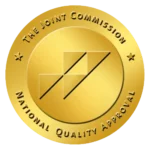Striking a balance between moderate consumption and avoiding excessive intake is crucial for maintaining physical health, mental well-being, and responsible social behavior. Understanding these limits empowers individuals to make informed choices, fostering a culture of mindful and responsible alcohol consumption.

Key Takeaways
Understanding moderation is essential to prevent health risks associated with excessive alcohol consumption. Here’s what you need to know about safe drinking practices:
- Prolonged heavy drinking can lead to severe consequences like liver damage, addiction, and heightened accident susceptibility.
- Personal factors such as weight, metabolism, and genetics play a role in determining one’s alcohol tolerance.
- Adhering to recommended alcohol consumption guidelines can safeguard your well-being.
Contact The Haven Detox-Little Rock at (501) 271-3342 for personalized addiction treatment services to foster long-term recovery and growth.
How The Body Processes Alcohol
When alcohol is consumed, it is rapidly absorbed into the bloodstream from the stomach and small intestine. The liver plays a central role in metabolizing alcohol. It breaks down alcohol into acetaldehyde and then further into harmless substances.
However, excessive alcohol consumption overwhelms the liver’s capacity, leading to a buildup of acetaldehyde, causing damage to cells and tissues.
What Alcohol Does to The Body
Excessive and prolonged alcohol consumption can lead to severe health consequences. It affects the brain, impairs cognitive functions, and can contribute to mental health disorders. The cardiovascular system is also at risk, with alcohol raising blood pressure and increasing the likelihood of heart disease.
Moreover, chronic alcohol abuse can result in liver diseases such as cirrhosis and pancreatitis. It weakens the immune system, making the body more susceptible to infections.
Units of Alcohol Explained
Units of alcohol are used to measure the amount of pure alcohol (ethanol) contained in a beverage. This measurement is important for understanding and managing the consumption of alcoholic drinks, as excessive alcohol consumption can have negative health effects.
In most countries, a standard unit of alcohol contains about 10 grams of pure ethanol. This ethanol is approximately equivalent to the average amount the human body can metabolize in about one hour.
Calculating Units of Alcohol
To calculate the number of units in a beverage, you can use the following formula:
Units of Alcohol = Volume (in milliliters) × Alcohol by Volume (ABV) (%) / 1000 × 0.789 (density of ethanol)
Let’s take a closer look at the elements of the formula:
- Volume: This is the total volume of your beverage, usually measured in milliliters (ml).
- Alcohol by Volume (ABV): ABV is the percentage of the beverage that is pure alcohol.
- 0.789: This is the density of ethanol, which converts the volume of alcohol into grams.
There are handy calculators online that help you estimate the number of alcohol units in your drink. These calculations are estimations to help you practice safe drinking.
Moderate Alcohol Consumption
Moderate alcohol consumption refers to the practice of drinking alcoholic beverages in a responsible and controlled manner. It is generally defined as up to one standard drink per day for women and up to two standard drinks per day for men.
A standard drink contains a specific amount of alcohol, typically around 14 grams or 0.6 ounces. This level of consumption is associated with certain potential health benefits, such as a reduced risk of heart disease and diabetes.
It’s important to note that adults’ tolerances may vary, and moderation is key to avoiding negative effects.
High-Risk Alcohol Consumption
High-risk alcohol consumption entails exceeding the recommended limits of moderate drinking, which can lead to adverse health outcomes and safety concerns in adults. Binge drinking, often classified as consuming five or more drinks for men and four or more for women in a short period, is a form of high-risk drinking.
This behavior can result in impaired judgment, accidents, alcohol poisoning, and long-term health problems. Chronic excessive alcohol consumption is linked to a higher risk of liver disease, addiction, mental health issues, and other severe medical conditions.
Signs of Alcohol Dependence and Addiction
If you or someone you know is experiencing these signs, seek guidance from a medical professional or addiction specialist.
Some common signs of alcohol use disorder and addiction are:
- Increased tolerance and need for more alcohol
- Withdrawal symptoms when not drinking
- Neglecting responsibilities due to alcohol use
- Spending significant time obtaining, using, or recovering from alcohol
- Loss of interest in once-enjoyed activities
- Continued use despite negative consequences
- Drinking in risky situations
- Physical and psychological dependence
- Increased isolation from friends and family
- Neglected appearance and hygiene
- Rapid mood swings and irritability
- Loss of memory or blackouts
- Denial of the problem despite the evidence
If you notice any of these signs in a loved one, approach the topic with compassion and guide them to the help they need.
Self-Assessment: Are You Drinking Too Much?
Ask yourself the following questions to gauge your drinking habits. A self-assessment is a good benchmark to monitor your drinking but does not replace the advice of a qualified medical professional.
- Frequency: How often do you drink alcohol? Drinking daily or multiple times a week might be a cause for concern.
- Quantity: How much do you drink on a typical drinking day? Excessive drinking is generally considered five or more drinks for men and four or more for women in about two hours.
- Binge Drinking: Do you engage in binge drinking? Heavy alcohol use is consuming a large amount of alcohol quickly, often defined as five or more drinks for men and four or more for women within about two hours.
- Tolerance: Have you noticed that you must drink more to achieve the same effects? Developing high tolerance could be a sign of problematic drinking.
- Impact on Life: Is drinking causing personal, social, or professional issues? This could include neglecting responsibilities, strained relationships, or poor performance at work or school.
- Cravings: Do you feel a strong urge to drink and find it difficult to cut down or control your excessive alcohol use?
- Withdrawal Symptoms: Do you experience withdrawal symptoms (such as tremors, sweating, anxiety, or nausea) when you stop drinking or reduce your alcohol intake?
- Health Issues: Are you experiencing physical or mental health problems that you suspect might be related to alcohol use? Alcohol can exacerbate existing health conditions and contribute to new ones.
- Failed Attempts to Cut Down: Have you tried to reduce your drinking or quit altogether but found it challenging?
- Drinking Alone: Do you often drink alone or in situations where others aren’t drinking?
Consult a healthcare professional for personalized advice if you’re concerned about your drinking habits.
Benefits of Reducing Alcohol Consumption
Reducing alcohol consumption offers many benefits for both physical and mental well-being. Reducing alcohol intake promotes better overall health by lowering the risk of liver disease, cardiovascular issues, and breast and liver cancer. Findings claim that reducing alcohol can lead to weight loss, improved immune function, and better sleep patterns.
Mental health sees a positive impact as well. Lower alcohol intake is linked to reduced anxiety, depression, and mood swings. It enhances cognitive function and helps maintain better focus and memory. Personal relationships often flourish, as decreased alcohol consumption leads to more meaningful interactions and improved communication.
Financial gains are an additional advantage for patients. Reduced spending on alcohol and medications means more savings for important goals. Socially, less alcohol can lead to responsible and safer behavior, reducing injuries, risky situations, and deaths.
Tips for Cutting Back
Cutting back on alcohol can be a beneficial step for your health and well-being.
Here are some practical ways to help you reduce your alcohol consumption:
- Set clear and achievable goals.
- Monitor and track your alcohol intake.
- Find healthier alternatives to alcohol.
- Identify triggers and develop coping strategies.
- Engage in new hobbies and activities.
- Seek support from friends and family.
- Stay hydrated and maintain a healthy diet.
- Practice stress-relief techniques like meditation.
- Create a structured daily routine.
- Learn to say “no” in social situations.
- Avoid keeping alcohol at home.
- Reward yourself for milestones achieved.
- Educate yourself about the risks of excessive drinking.
- Join support groups or counseling.
- Be patient and kind to yourself throughout the process.
If you start to experience withdrawal symptoms when reducing your alcohol intake, you might have an alcohol addiction. Talk to your doctor if you are concerned about the possibility of addiction.
Frequently Asked Questions (FAQ)
How much alcohol does it take to damage a liver?
The amount of alcohol required to damage the liver cells varies, but prolonged and heavy drinking increases the risk of liver disease. Chronic excessive alcohol consumption can lead to conditions like fatty liver, strokes, alcoholic hepatitis, and cirrhosis, potentially causing irreversible damage over time.
What happens if you drink alcohol every day?
Drinking alcohol every day can lead to various health risks and complications. Research suggests it can result in alcohol dependence, chronic diseases, liver damage, increased blood pressure, heart problems, weakened immune system, cognitive impairment, and mental health issues.
Studies suggest that regular consumption also raises the risk of accidents, addiction, and social consequences in people. Moderation is essential to avoid these potential negative effects.
How much alcohol can you safely drink per day?
Moderate alcohol consumption guidelines suggest up to one standard drink per day for women and up to two for men. A standard drink is typically equivalent to 14 grams of pure alcohol, found in about 5 ounces of wine, 12 ounces of beer, or 1.5 ounces of distilled spirits.
However, individual tolerances and health factors vary, so consulting a healthcare professional is advisable.
The Haven Detox-Little Rock: Trusted Alcohol Rehabilitation
Discover a haven of hope and healing at The Haven Detox-Little Rock.
Our comprehensive addiction treatment services pave the way to recovery, guiding you toward a healthier and more fulfilling life. Experience a transformative detox and residential treatment plan tailored to your needs, fostering a safe and supportive environment for your recovery.
In addition, our dedicated therapists are committed to helping you build effective coping mechanisms, addressing the underlying causes of addiction, and managing triggers that may arise during your recovery journey. Take the first step towards lasting change today. Contact us at (501) 271-3342 to learn more.



